Skip the store-bought versions and make your own homemade Beef Tallow! One ingredient, no special tools, and just a quick couple of steps to have a healthy rich substitute for oil and butter.
Homemade beef tallow makes a perfect and delicious substitute for oil in cooking and is packed with fats and flavor. It is the old-school method of cooking food, way before any vegetable shortening or oils came into the market.
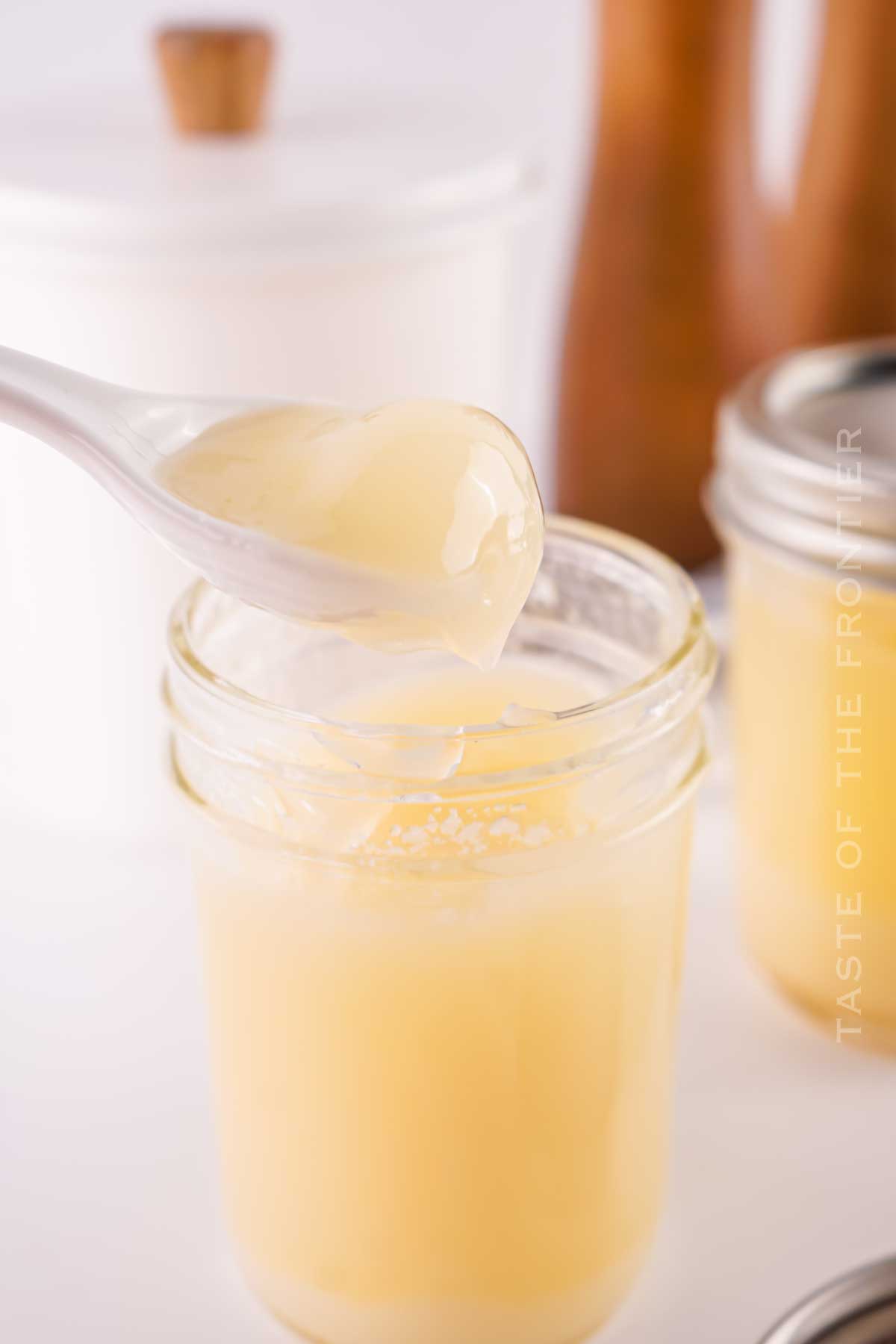
Plus, you can actually make a super moisturizing (without beefy or fatty smell) body butter for your skin!
The prep work barely takes 5 minutes and the rest of the work is on the oven. However, you do need to prepare sterile mason jars (I’ll show you how to do that). Do not worry, even if it is your very first time making tallow, you will succeed, my recipe is super easy.
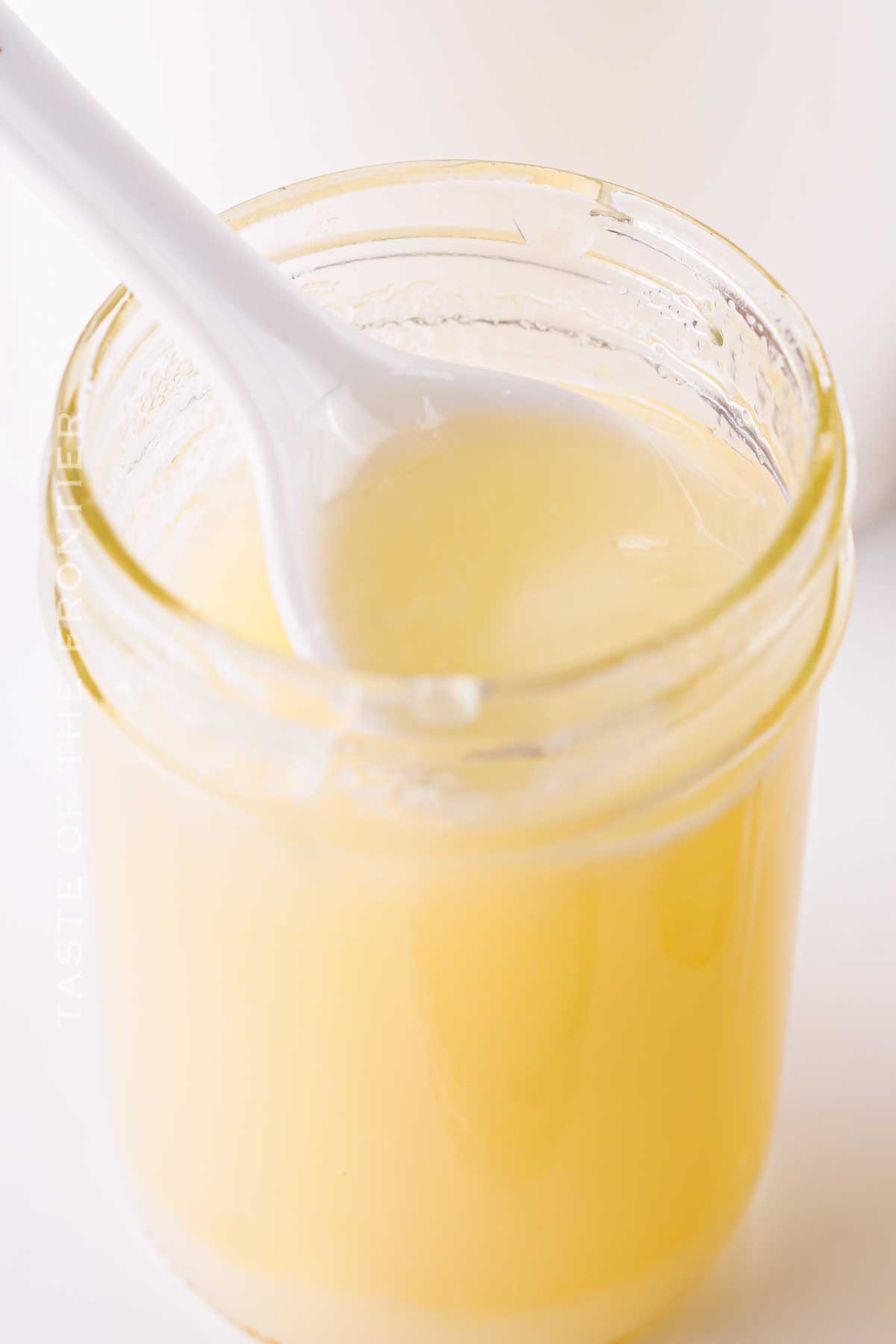
What Is Beef Tallow Exactly?
Beef tallow is simply very slowly rendered fat, melted down over a few hours of cooking process that gets rid of all the impurities, gelatin, water, and protein.
The word tallow refers to the liquid component of the solid fat.
Cold beef fat is hard and solid, but beef tallow is translucent golden-yellow when warm and white and soft when cool.
It is used in cooking, frying, skincare products, lip balm, homemade soap, and candles.
It is versatile, cheap, healthy, and delicious.
You’ll Only Need Beef Fat
The only ingredient is beef fat, like it should be!
- 2 pounds of fresh beef fat to make about 30 ounces of beef tallow. No salt or pepper needed, and no water. The fat has to be fresh or frozen, as it doesn’t last long. If it has a strong or even rancid smell, you can’t use it for tallow.
What fat qualifies? Any beef brisket fat trimmings or fat you trimmed off any meat, which means in that case the tallow will come at no extra cost for you
Or you can of course buy beef fat from a local butcher. He may even have some kidney fat aka leaf fat or beef suet which is really good as it contains less saturated fat.
Note that tallow carries all the health benefits only when you make it from healthy fat, meaning from grass-fed or organic beef fat. Younger animals’ fat makes a whiter and cleaner tallow.
Cold fat is easier to cut, so store it in the fridge until you’re ready to cook.
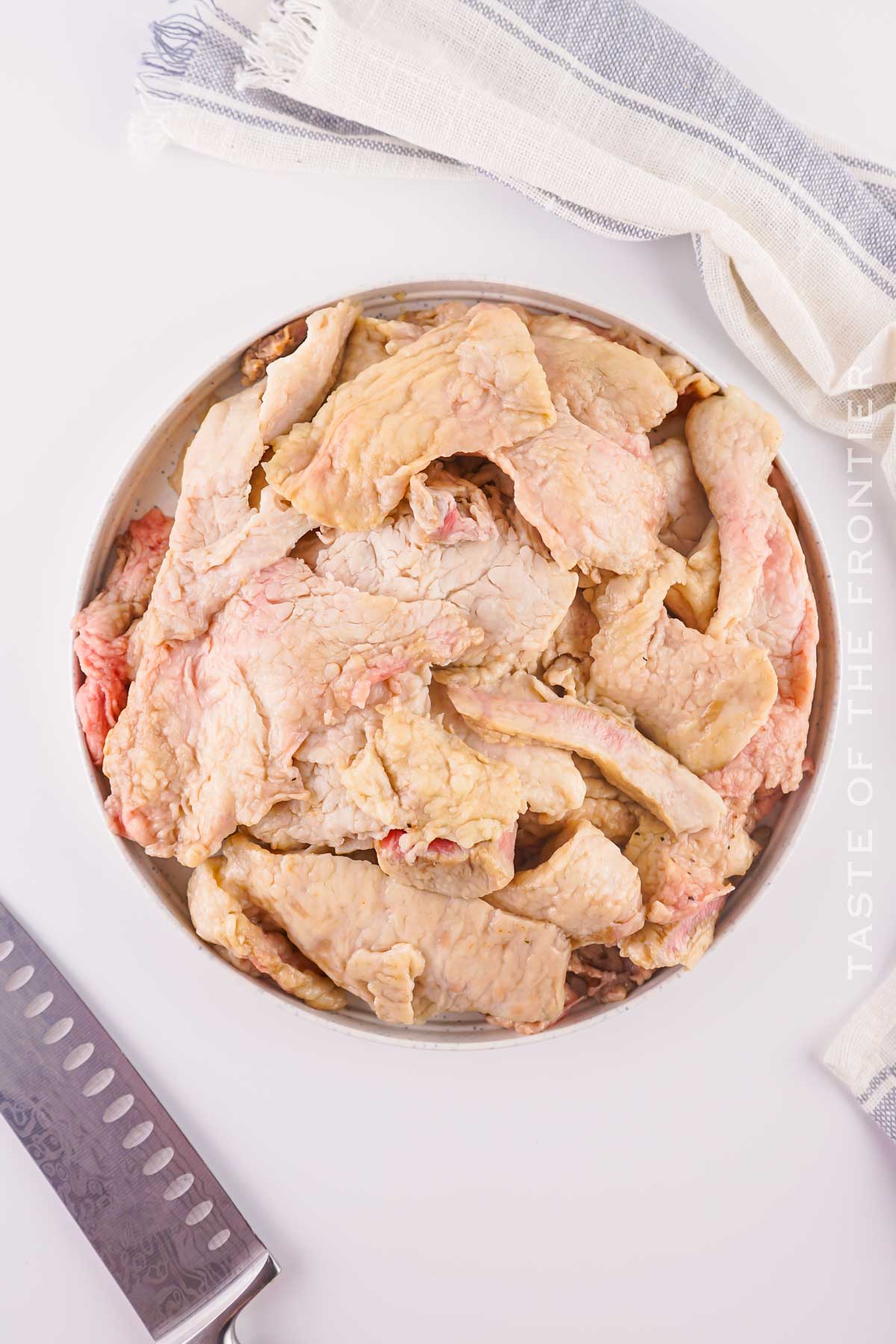
Kitchen Equipment
- Fine mesh strainer (cheesecloth-lined strainer, or use a coffee filter, if you have neither, paper towel works too) to remove any bits of meat and residue.
- 8×8 baking dish to render fat in the oven.
- Mason jars for storage (or similar) with a funnel (optional, for pouring the tallow more comfortably). Any wide-mouth glass jar will work.
How To Make Your Own Tallow: Steps
Making beef tallow is really easy, just takes time and some patience, but having your own beef tallow stock is well worth it!
- Preheat the oven to 250 degrees F. We need very low heat to slowly melt the fat.
- Cut the fat into large pieces. It doesn’t have to be a specific size, just as long as it’s not one large piece. It is best to not use a wooden cutting board. Plastic or glass.
- Place the fat into an 8×8 baking dish.
- Bake for 3 hours. Once the fat heats up, the rendering process will start and you will see how the solid fat starts to melt and turn into liquid fat. When you notice that the rendered beef fat starts to brown, it is done.
- Remove from the oven. Be careful not to burn yourself as it can splash as you move the dish. You can let it cool slightly if it is too hot to handle, but not too much as it can start to solidify.
- Carefully pour the melted fat through a fine mesh strainer, into a pourable measuring cup or large bowl.
- Immediately pour the melted fat from the bowl/measuring cup into sterile jars and secure the lids.
- Wait until the fat cools to room temperature. Tighten the lids one more time and then place the fat in the refrigerator for 48 hours or until set.
If you have any gelatin formed at the bottom of the bowls before you divide the tallow between jars, keep it!
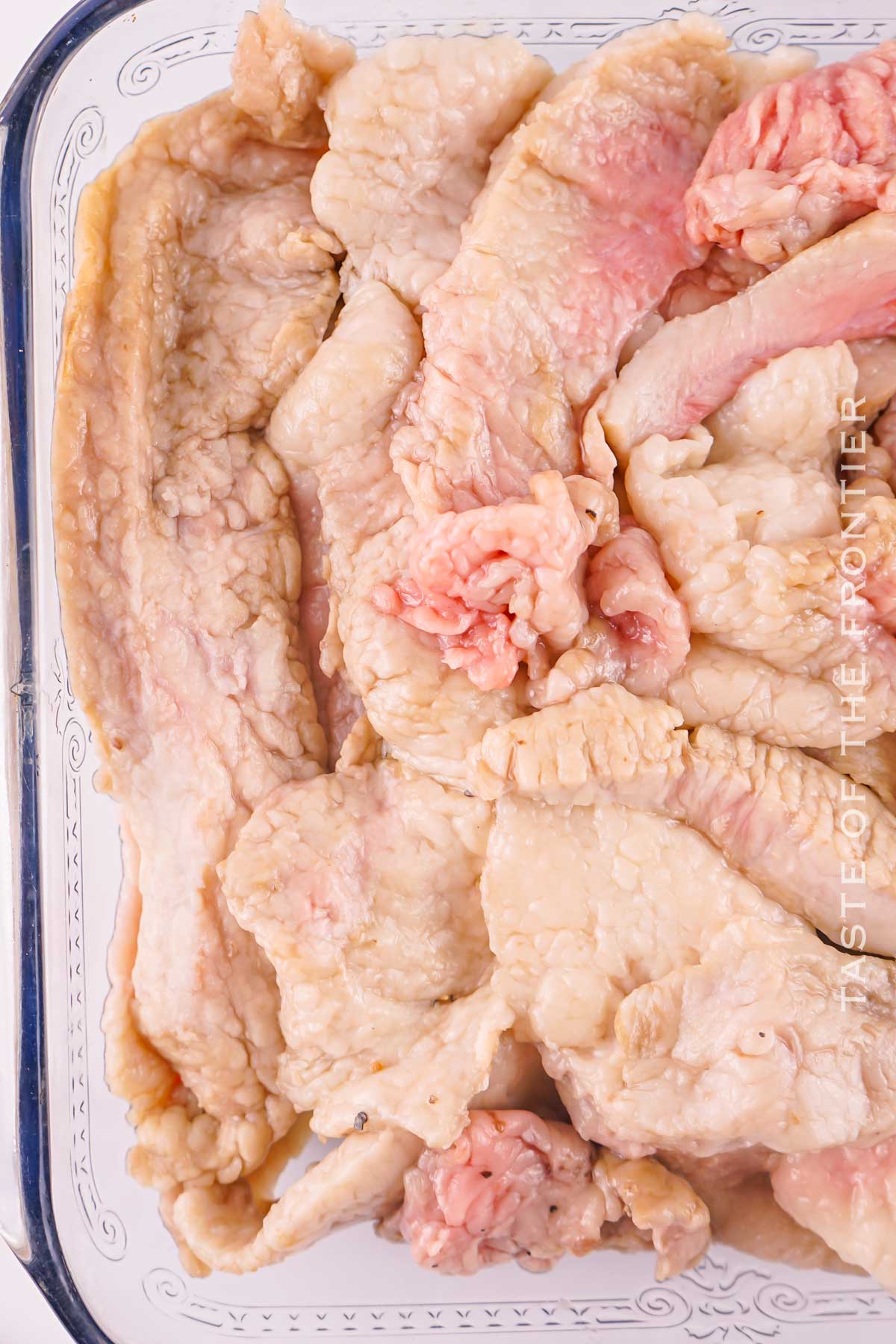
Slow Cooker Method
The lower heat you choose, the slower the fat will be rendered, it will look clearer, and smell less like animal fats.
If you opt for cooking fat slowly, you may set your crock pot outside on the patio as the smell during the rendering process will be quite strong.
It is best if you have a large pot capacity in your slow cooker to fit all the fat in both solid and liquid form.
- Cut the fat into cubes, 1-2 inches is ok.
- Place all of them in the slow cooker, do not cover the pot with the lid, and cook on low for 7-8 hours until they start to lightly brown. Remove any foam, meat bits, or impurities and stir every 30 minutes.
- Strain through a cheesecloth-lined strainer, and pour the final product into the jars.
Stovetop Method
- In a large pot or stock pot, place all the cubed fat and start simmering over low heat. Do not increase the temperature and do not let the fat boil. Stir occasionally with a wooden spatula, especially if you see bubbling on the surface. Scrape bits off the sides. Cook for about 4 hours.
- Once the tallow is done, strain in the bowl and divide between glass jars.
How To Sterilize The Jars For Beef Tallow
To make sure the tallow has a long shelf life and doesn’t grow mold, sterilize the jars beforehand and let them cool.
Simply clean the glass jars, then put them and lids separately on a baking sheet in a cold oven and bring the temperature to around 250F – leave for 20 minutes or 325F to 15 minutes.
Storage
Homemade beef tallow is shelf-stable for up to a month in an airtight container. You can extend that by storing it in the refrigerator for up to 3 months. Freeze in a freezer-safe airtight container for up to 3 months.
Some of my jars lasted for up to a year. If the tallow became rancid, it would have gone bad.
Vaccum-sealed and frozen beef tallow will probably last forever.
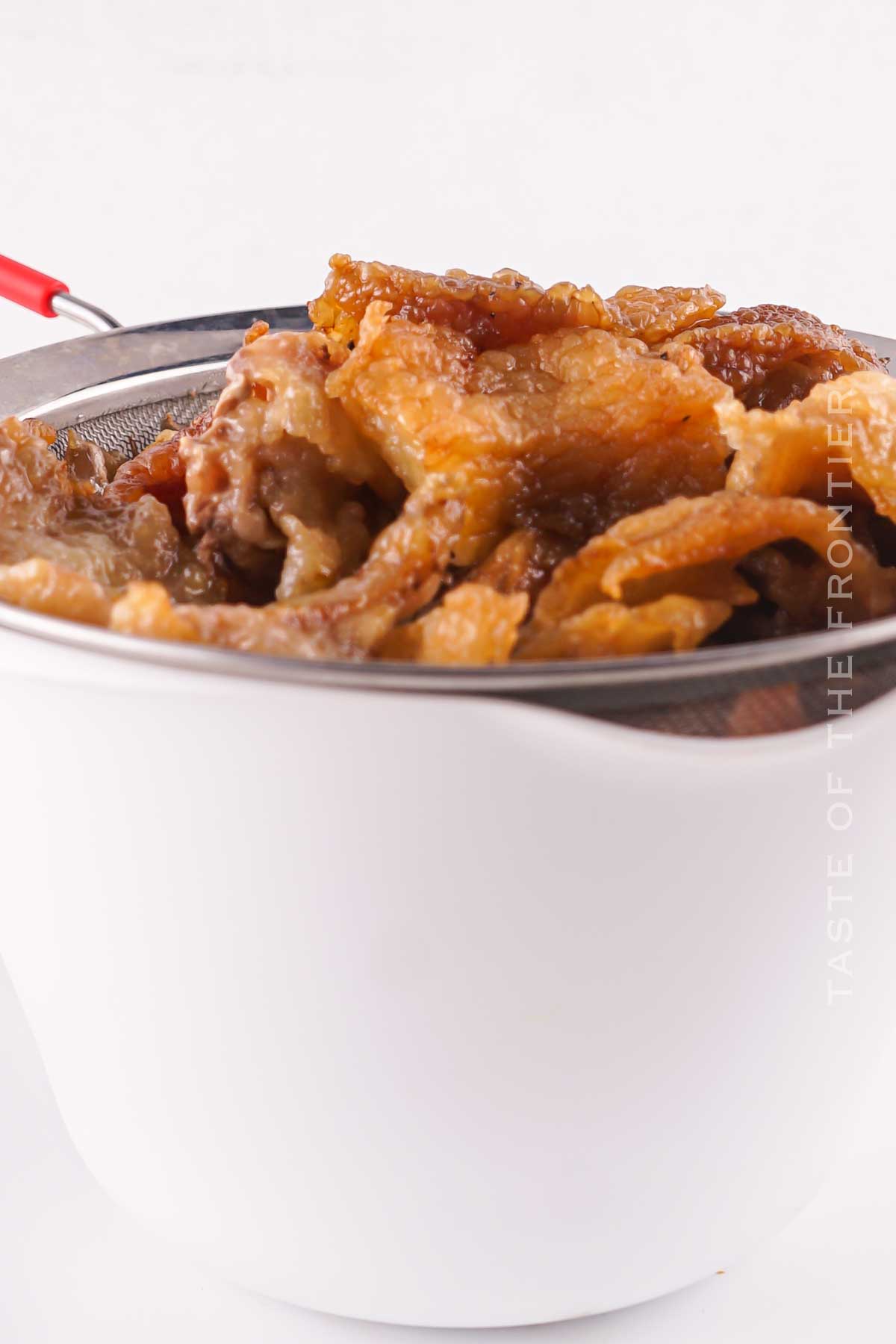
What Is Homemade Beef Tallow Good For?
A mason jar with this liquid gold can come in handy around the kitchen and beyond. Here are some good uses for your personal stash of high-quality beef tallow:
- Seasoning the cast iron skillets.
- High-heat Cooking and frying as a replacement for vegetable oils and butter in savory dishes. Some scientists argue that tallow is healthier than coconut oil. Cooking steak or sauteeing veggies with beef tallow? The flavors are to die for! Anything potatoes, especially wedges or french fries, cooked with tallow are the best potatoes you’ve ever eaten.
- To make rich pie crusts and homemade bread. For savory pies and cornbread, it tastes amazing.
- Deep frying: beef tallow has a high smoking point (420ºF/215ºC). Tallow has a higher smoke point than olive oil.
- The finished product can be used for gravy, especially if you let it render until it is light brown.
- Skin care products for deep moisturizing, soaps, whipped soaps, as beef tallow is rich in stearic acid that is good for skin health and reducing inflammation.
- Health benefits. Tallow is good for daily consumption as it is rich in good fat, vitamins A, D, and E, and keeps the heart healthy, immune system strong, and cognitive function sharp thanks to the full spectrum of fatty acids (like Omega-6, linoleic acid, etc). The A, D, and E are fat-soluble vitamins which means they will only be absorbed if consumed with some fat, which is exactly what tallow is – liquid fats. Grass-fed beef tallow has more vitamin D than canola oil too.
Tips To Make Beef Tallow
- PRO TIP – store the jars upside down in the fridge to set. This separates the water from the fat. Once set, you can pour the water off to extend the life of the tallow and prevent any mold growth.
- If the beef fat is not purely white and still has some blood or bits on it, you can soak it in ice water before cutting for 1 hour. Pour enough water to cover all the fat, and let it soak. Keeping the fat cool also helps with cutting it.
- The fat will render faster if you use small pieces or work in small batches. I keep things simple, but you can even grind it in the food processor or meat grinder. You can also blend the fat after it starts to melt and let it continue cooking.
- Straining the liquid tallow is a crucial step as it purifies the flavor too.
- When stored in the fridge, this tallow will be a soft solid. However, when left at room temperature, it will soften and be thinner. It has a very similar texture and melting point to coconut oil.
- If you have some random pieces of meat attached to the fat, that’s perfectly ok. It will still cook down just fine.
- You can use your smoker to render fat pieces too. In such case you may even use disposable pans. A double layer of foil pans will prevent burning. The best position to make tallow is the bottom grate.
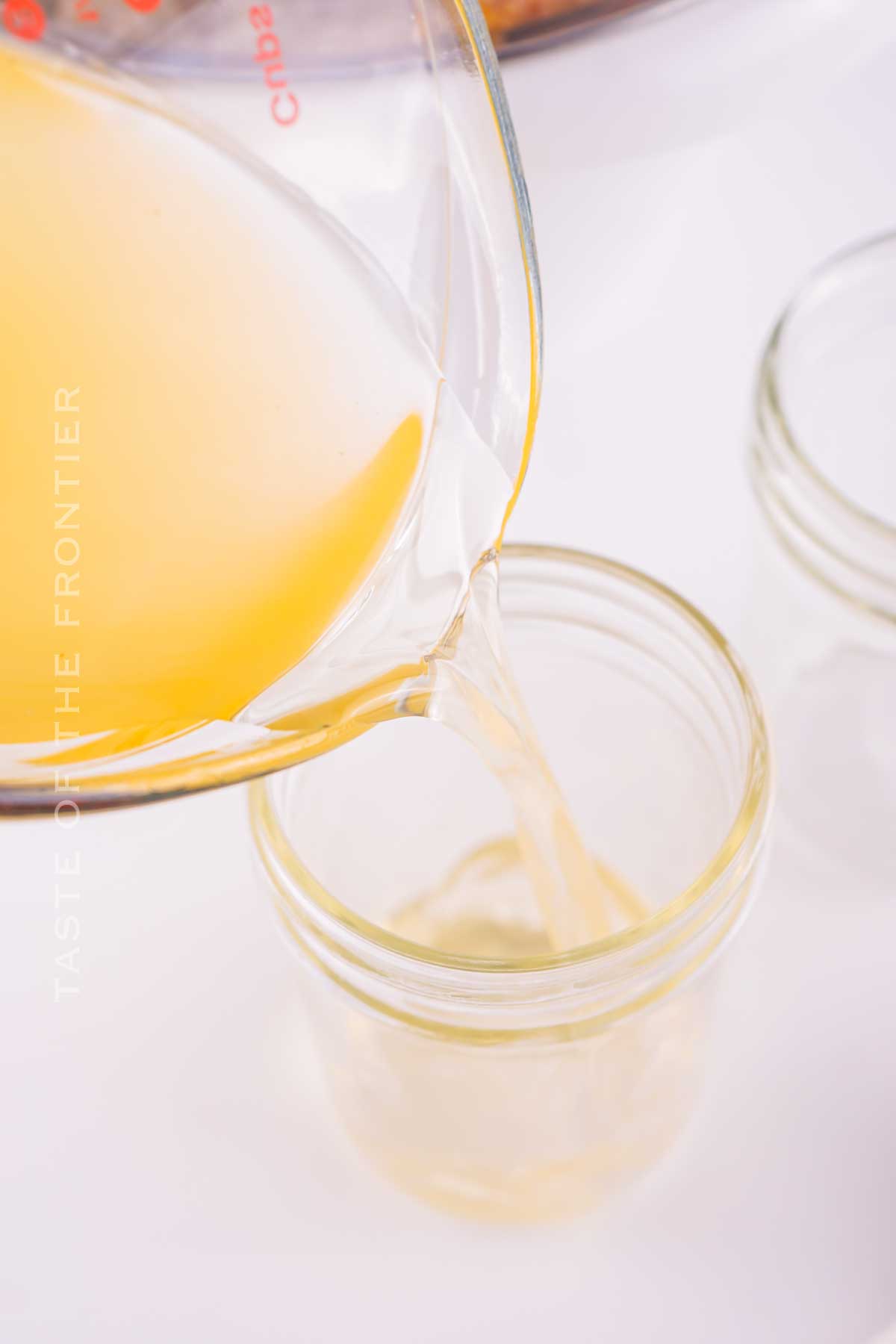
Questions On Making Beef Tallow
How To Get Pure White Tallow?
Slowly rendering the fat, straining it, and removing any meat bits or skin formed at the top surface is the best way to achieve a nice pure white tallow once it solidifies. You can melt the fat twice and strain it twice to get a cleaner whiter tallow.
Can I Use Pork Fat Or Other Animal Fats To Make Tallow?
Tallow is animal fat that is rendered. Usually, beef or mutton are used. Pork fat is what we call lard and is slightly softer than beef tallow. However, the rendering process would be the same no matter what animal fat you use.
In cooking, we use the word tallow for goat, beef, deer fat, lard – for pork, and shmaltz – for chicken fat.
Is It Better To Render Tallow Wet Or Dry?
I always render fat dry as water in jars can cause mold and when you slowly rendering fat you don’t actually need water for the fat to melt.
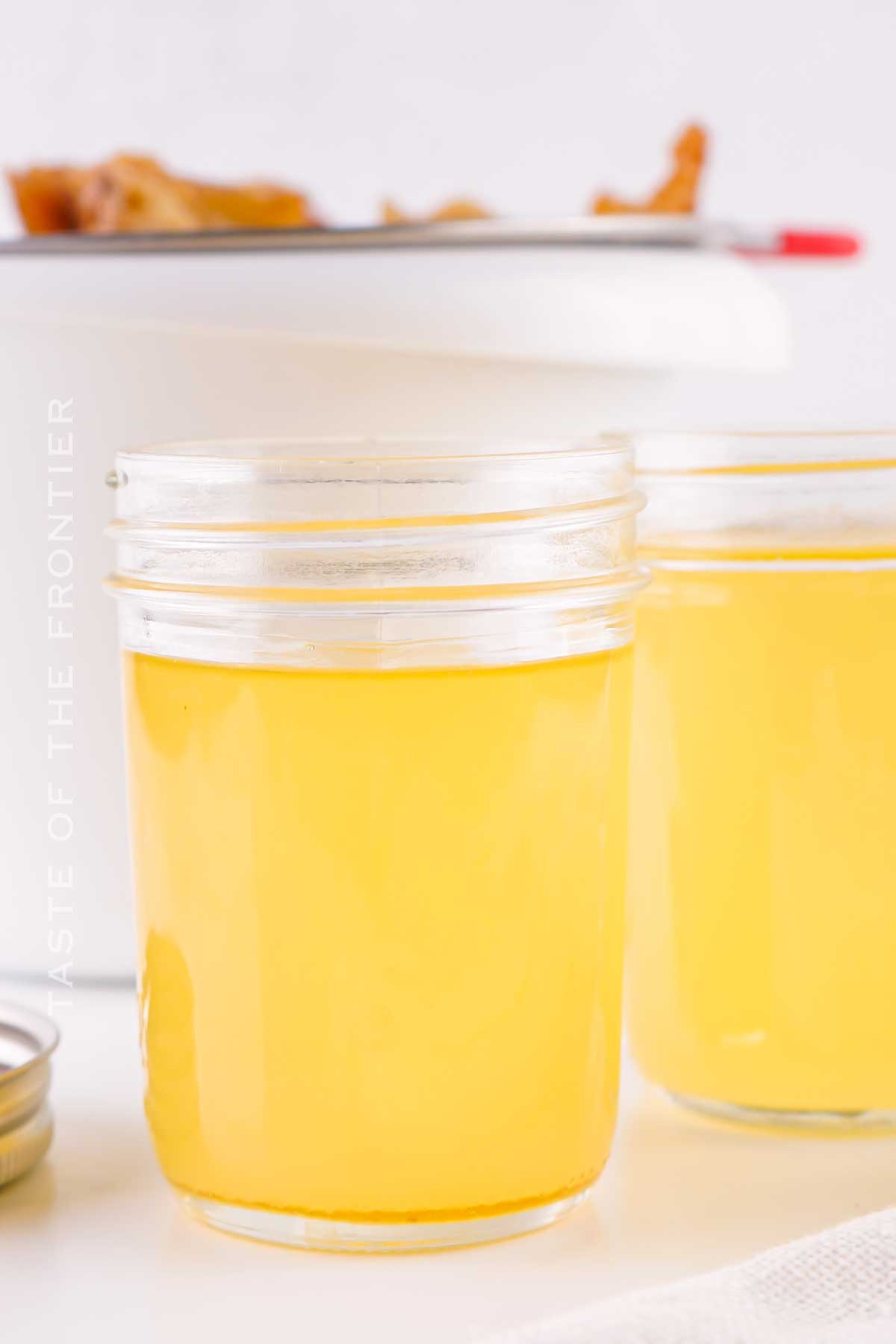
If you love this simple recipe for homemade tallow, you’re going to love these other basics too. Please click each link below to find the easy, printable recipe!
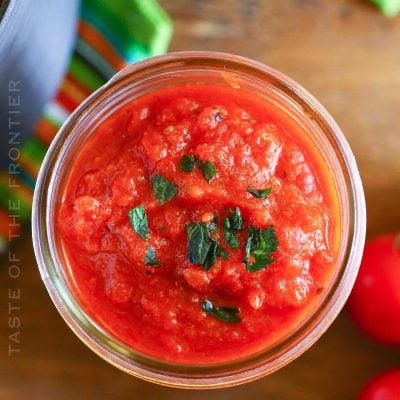
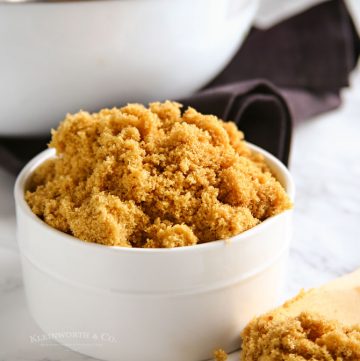
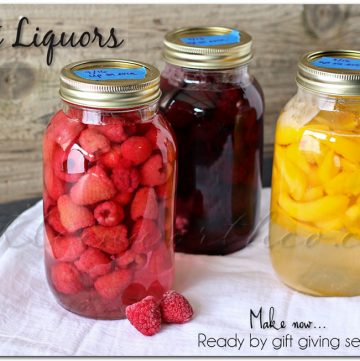
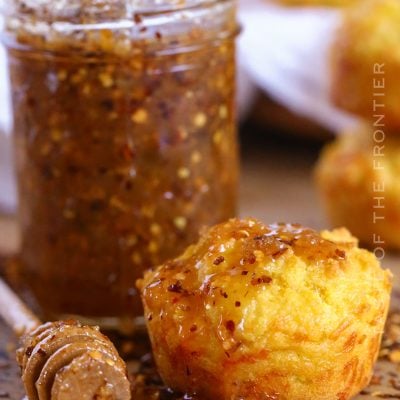
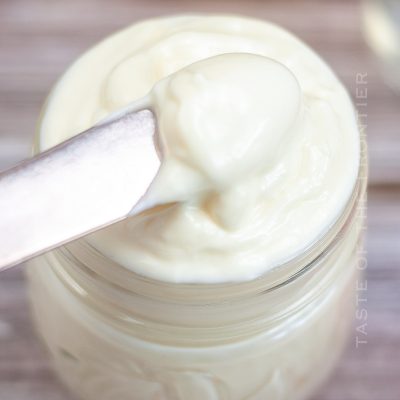
More Great Homemade Staples
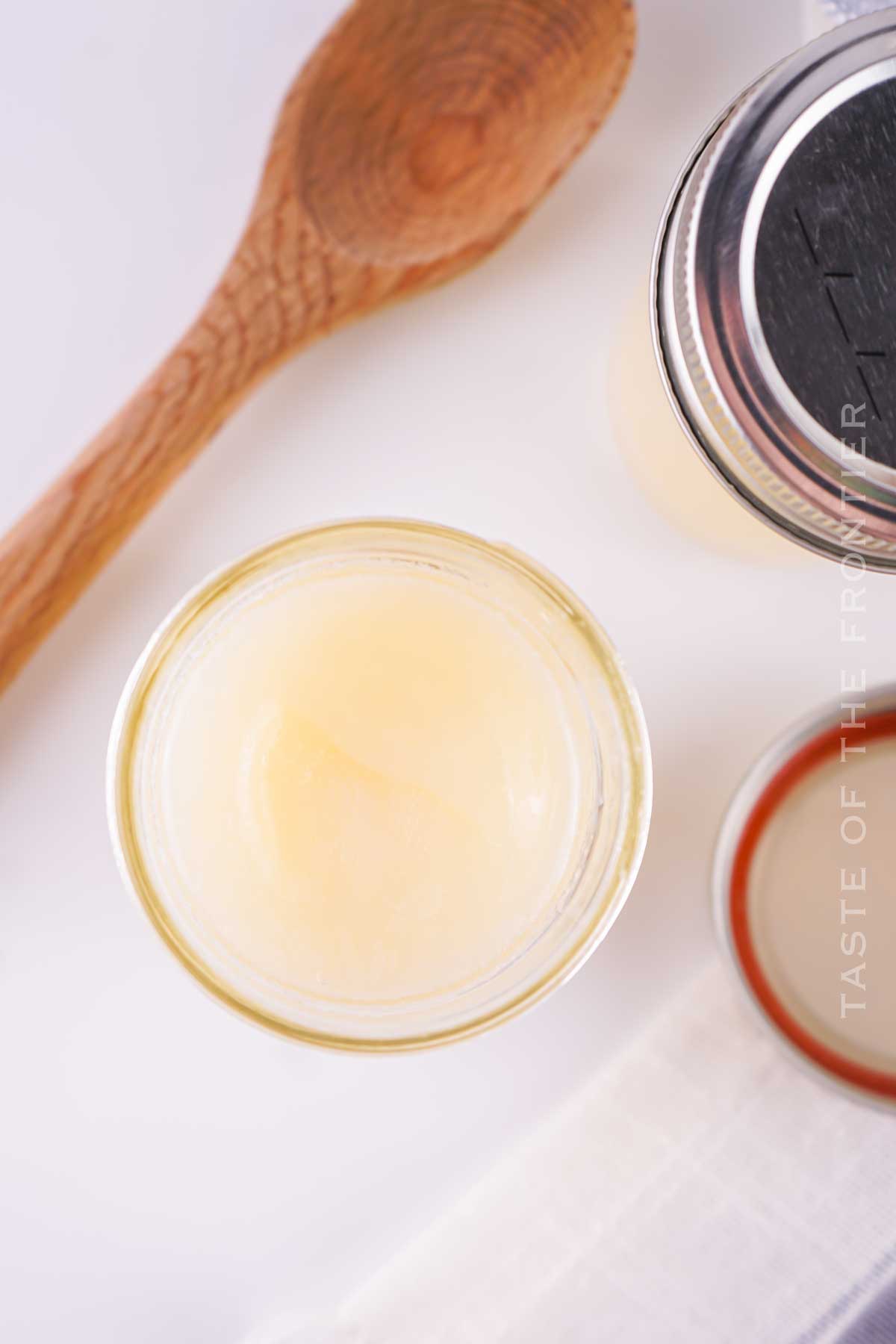
CONNECT WITH YUMMI HAUS!
Be sure to follow me on my social media, so you never miss a post!
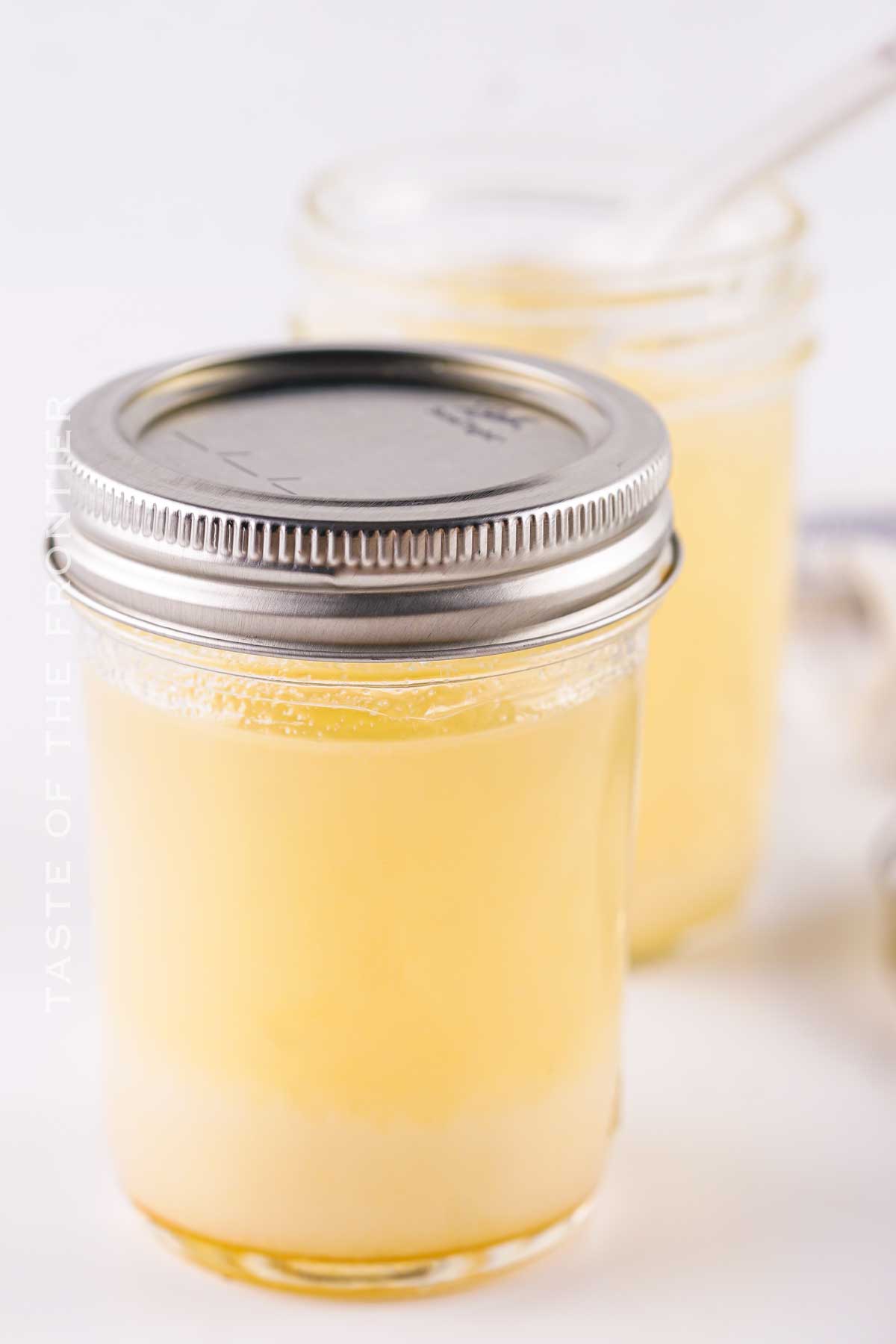
Beef Tallow
Ingredients
- 2 pounds beef fat fresh
Instructions
- Preheat the oven to 250 degrees.
- Cut the fat into large pieces. It doesn’t have to be a specific size, just as long as it’s not one large piece.
- Place the fat into an 8×8 baking dish.
- Bake for 3 hours.
- Remove from the oven. Be careful not to burn yourself as it can splash as you move the dish.
- Pour the melted fat through a fine mesh strainer, into a pourable measuring cup or bowl.
- Immediately pour the melted fat from the bowl/measuring cup into sterile jars and secure the lids.
- Let the fat cool to room temperature. Tighten the lids one more time and then place the fat in the refrigerator for 48 hours or until set.
Notes
●PRO TIP – store the jars upside down in the fridge to set. This separates the water from the fat. Once set, you can pour the water off to allow extend the life of the tallow.
●When stored in the fridge, this tallow will be a soft solid. However, when left at room temperature, it will soften and be thinner. It has a very similar texture and melting point as coconut oil.
●Beef tallow has a high smoking point, which makes it amazing to cook and fry with. It provides amazing flavor, but it also reduces a smoky home after meals. You can use it in place of butter, lard, etc.
●If you have some random pieces of meat attached to the fat, that’s perfectly ok. It will still cook down just fine.
Equipment
- fine mesh strainer
- mason jars for storage (or similar)
Nutrition
Nutritional information for the recipe is provided as a courtesy and is approximate. Please double-check with your own dietary calculator for the best accuracy. We at Yummi Haus cannot guarantee the accuracy of the nutritional information given for any recipe on this site.

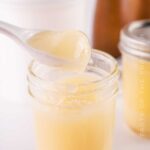
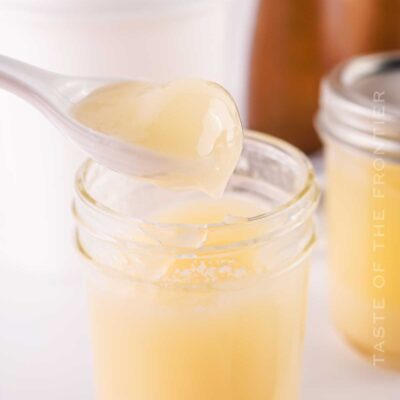






Share Your Thoughts